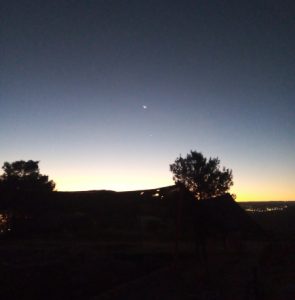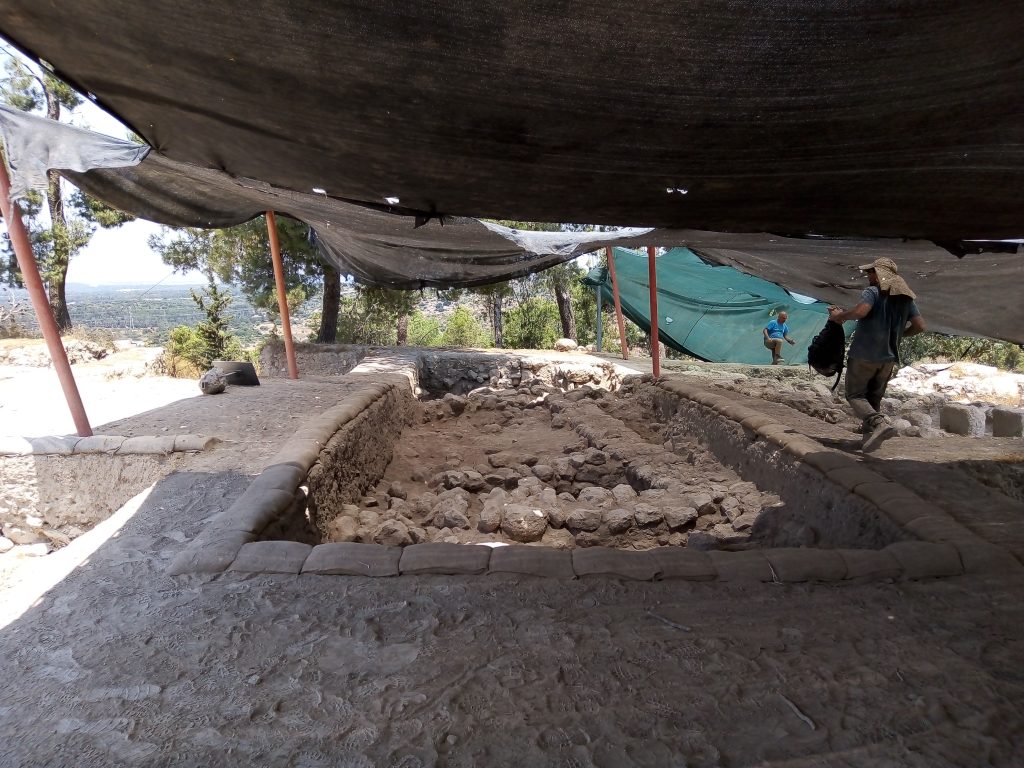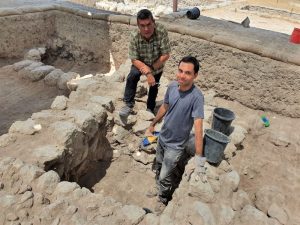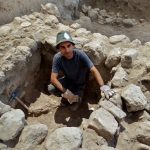
Bringing Azekah’s Walls into the Light
Bruno Barros, 2022 G.E. Wright/Shirlee Meyers Fellowship Recipient

Sunrise in Area N1.
Yalla, Yalla! That was the call to jump on the bus around 4:50 in the morning. Half awake and half asleep, we prepared ourselves for another day of excavating at Tel Azekah in Israel. The days that any volunteer or staff member spends on a dig are far from ordinary as there is always something to keep you occupied! After arriving at the site while it was still a bit dark, we would carry the tools all the way up to our area and get started on the day’s activities. Among all the areas of the site, I was selected to work in area N1, an extensive area where you can find Middle/Late Bronze walls and floors in some squares and Iron Age/Persian structures in others. In previous seasons, an olive oil press dating to Iron Age IIC was found in area N1. This olive oil press is the best preserved in Israel from this period. After 701 B.C.E. and Sennacherib’s invasion of the Shephelah region of ancient Judah—which comprises the Judean mountains and the coastal plain—more local installations for the production of olive oil are found. There are around three different periods of olive oil production in the Shephelah affected by the Assyrian Empire. In the period before the 701 invasion, production was private, and the olive oil went to the city of Lachish, which was the center for collecting olive oil and paying taxes. After 701, the production center was moved to Ekron, and after the Assyrians left, Judah returned to the Shephelah and redeveloped the Judean olive oil production centers. Our task in area N1 was to open a new square adjacent to the Iron Age IIC olive oil press so we could search for the continuation of the Iron Age walls and possibly also a new press.


Dr. Lipschits supervising the volunteers.
Joining an archaeological dig is more than just “doing science”; it is also therapy. It is therapy because you do not have any option other than being patient about what will come out of your square, especially when you open a new one. During the first few days the big pickaxes dominated the scene without much result. Our group was a bit disappointed at first, but the rewards started to come during the second week. Big pickaxes began to be replaced by smaller ones, and the volunteers began excavating around the rocks in order to find possible contexts. Were those rocks part of the wall or part of its collapse? It took three weeks to expose most of the walls along with a few rooms that belonged respectively to the Iron Age IIC and Persian periods, not to mention a strange structure. We are still not sure of this structure’s exact function, but according to the directors it is most likely a silo from the Persian Period, though its construction and shape are unusual. The upcoming seasons hopefully will bring more answers for this particular square in N1
My primary goal this summer was to join the Lautenschläger Azekah Expedition and look for answers for my Ph.D. research in the Neo-Assyrian expansion in the Southern Levant. I am grateful for many of the questions answered during the season and for being part of the 2022 team. I would like to express my gratitude to ASOR and the scholarship’s donors. They made this exciting experience possible and have significantly contributed to my research. I also thank the Azekah administration and Prof. Oded Lipschits for having hosted me and clarifying many of my questions.
Bruno Barros is a Ph.D. candidate in the department of Assyriology and Hebrew Studies at Eötvös Loránd University, Budapest. His research interests include Neo-Assyrian Art History and Levantine Archaeology particularly in the Iron Age.
American Society of Overseas Research
The James F. Strange Center
209 Commerce Street
Alexandria, VA 22314
E-mail: info@asor.org
© 2023 ASOR
All rights reserved.
Images licensed under a Creative Commons Attribution-NonCommercial-ShareAlike 4.0 International License
COVID-19 Update: Please consider making payments or gifts on our secure Online Portal. Please e-mail info@asor.org if you have questions or need help.

